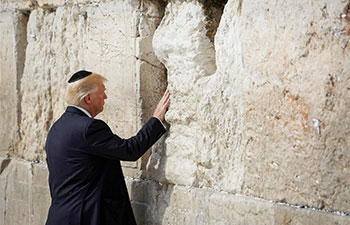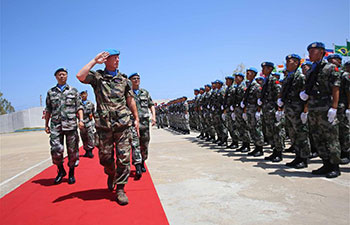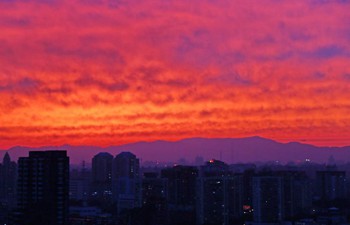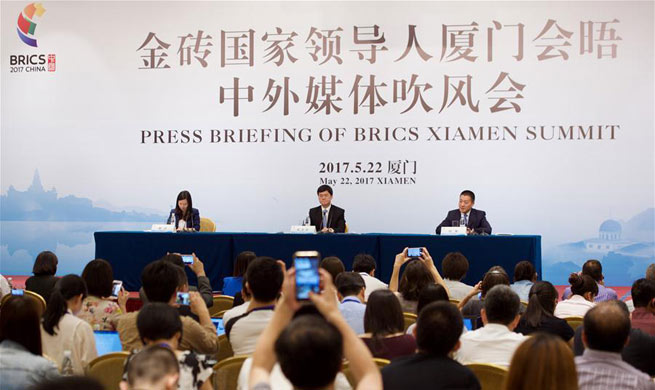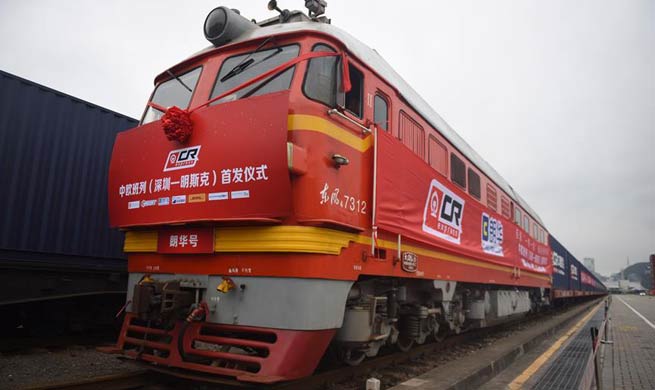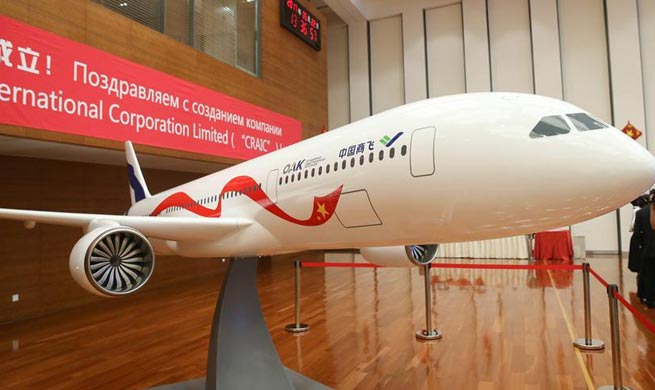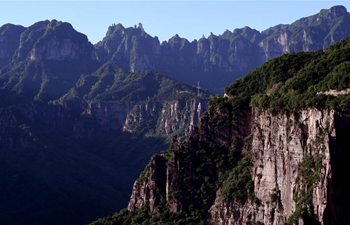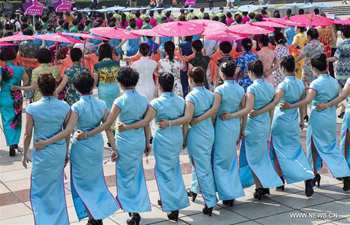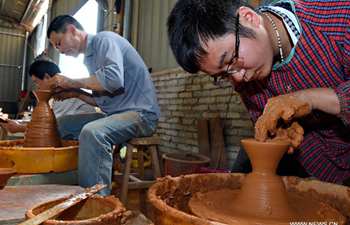By Xinhua Writers Lou Chen and Li Xiaoling
HORGOS, Xinjiang, May 22 (Xinhua) -- Horgos, a 136-year-old border crossing, was once a small and forgotten town in western Xinjiang Uygur Autonomous Region, along the border with Kazakhstan.
Today, as a key border checkpoint for the Belt and Road, the city is undergoing a transformation.
Horgos can be reached via a 40-minute flight from Xinjiang's capital, Urumqi, to Yining, followed by a 90-minute bus ride. The city is approximately a six-hour drive from Almaty, a Kazakh metropolis about 378 kilometers away.
First-time visitors to Horgos are surprised by its economic development. Hotels, apartments, factories and parks are being built, reinventing the skyline of this former backwater. In the busy season from July to February, trucks line up on the road for hours to pass through the border.
"It is a truly growing city. There has been explosive development in the last few years," said Guo Jianbin, deputy head of the management committee of Horgos economic development zone. Administrative staff of the zone are the same officials who manage the city.
The zone offers a five-year income tax break and other favorable policies for companies. Last year, more than 2,400 companies were registered in Horgos. Local GDP in 2016 was 5.12 billion yuan (about 742 million U.S. dollars), up 278 percent from 2015.
"GDP growth this year so far is up 150 percent from the same period last year," Guo said.
RARE MODEL
In 1881, China and Russia signed a trade deal that turned Horgos into a border pass. It became a county-level city in 2014.
Horgos's biggest lure is the China-Kazakhstan International Border Cooperation Center, which opened in 2012. The center is the world's first cross-border free-trade zone and the biggest duty-free shopping center in western China. It allows entry of citizens from any country with valid passport, exit and entry documents.
The center covers 5.28 square kilometers, about 3.43 sq km on the Chinese side and 1.85 sq km on the Kazakh side.
Within the center, there are rows upon rows of wholesale stores, duty-free shops, warehouse and business centers. Visitors can purchase up to 8,000 yuan, or 1,500 euros, of duty-free goods from the center.
Horgos customs said that in 2016, the center saw more than 5 million visitors and over one million people visited the center from January to March in 2017.
"It is a booming city where China connects with central and western Asia and even Europe," said Guo.
A NEW YIWU, AND EVEN MORE
Eighteen years ago, Yu Chengzhong, who is from central China's Henan Province, came to Horgos almost empty-pocketed. He peddled nectarines and other fruit that was hard to find in landlocked western Xinjiang. Now he is one of the most successful businessmen in Horgos.
Every day, about 50 trucks from Kazakhstan and other countries arrive at his warehouse and carry away tons of peppers, apples, peaches and other goods.
In 2016, Yu exported 70 million dollars' worth of fruit and vegetables through Horgos, in addition to other commodities, such as clothes, for a total export value reaching 260 million dollars.
"Most of the border trade between China and Kazakhstan is completed through Horgos," Yu said. Businessmen compare Horgos to Yiwu, the trade and manufacturing base of eastern China.
Kazakh driver Amirdinov Muratjan comes to Yu's warehouse almost every month.
"My truck mainly carries back fruit. I make 250 dollars a month, a very good sum for me," he said.
Tenant Pan Chunyan at the cooperation center found it hard to rent more space. The rent has soared five-fold in the last three years, and managers have had to cap the rent to curb speculation.
"I have never needed to advertise my shop, because there is already a great flow of people and logistics," said Pan, a clothes wholesaler from Zhejiang, who came here three years ago.
Hundreds of people from Kazakhstan, Kyrgyzstan and Russia visit her shop every day. Daily turnover is about 8,000 yuan (about 1,159 U.S. dollars), she said.
"It is easier to get a border pass than a visa to go to other cities, such as Urumqi and Guangzhou, so more and more people are coming here instead," she said.
Central Asian buyers come for clothes, bicycle parts and porcelain products, while Chinese buy flour, biscuits and raw industrial materials from their neighbors.
Min Jianbo, manager of Horgos Boshihao Electronics, opened a robot factory in May. The company has hired 200 locals, half of whom are Uygurs, Kazakhs and members of other ethnic minority groups.
"We will target markets in the Middle East, Central Asia and Russia," he said.
PROMISING FUTURE
The rise of Horgos is a true testament to the increasingly popular Belt and Road Initiative, many said.
Ma Yinong, head of the railway section at Horgos, has seen a growing number of cargo trains pass through the city.
"We are testing a passenger train service linking Urumqi to Almaty and even further, and are also preparing to handle more cargo," Ma said. Now, most China-Europe cargo trains go through the Alataw Pass to the north of Horgos.
"There is no doubt the city will continue to prosper," said Guo.
"We are stepping up management in intellectual property rights, financial services and law in order to stay on the right track of development," he said.





